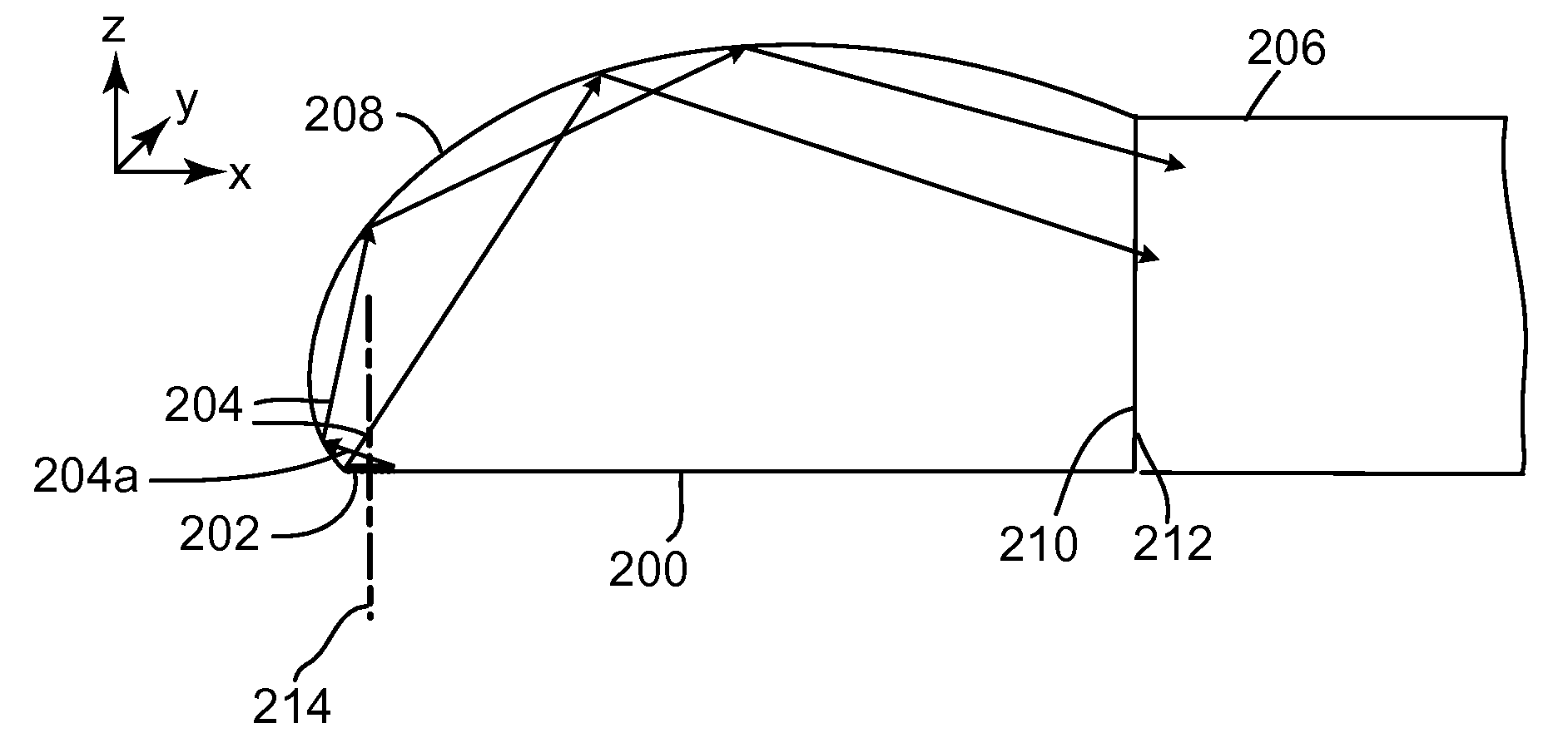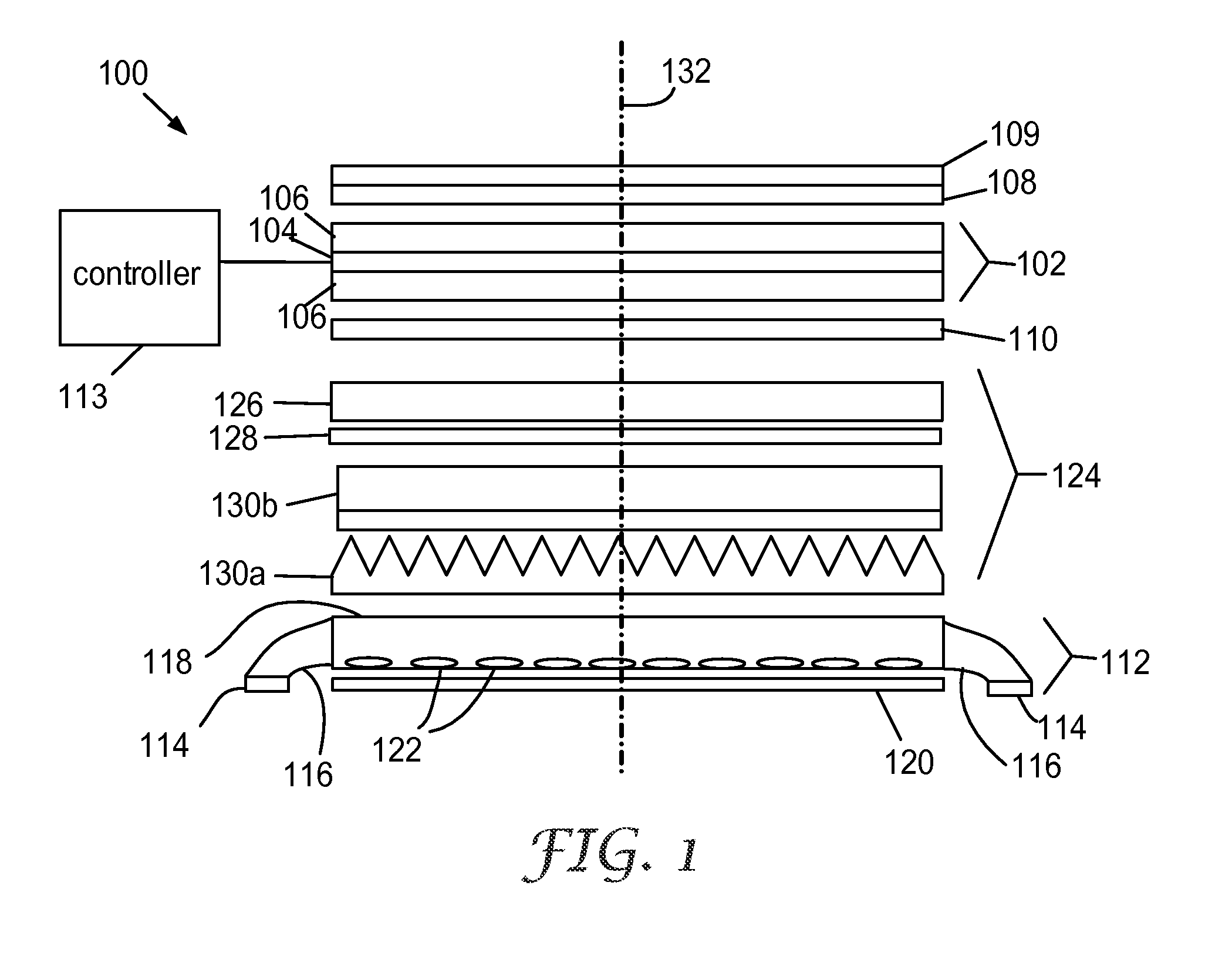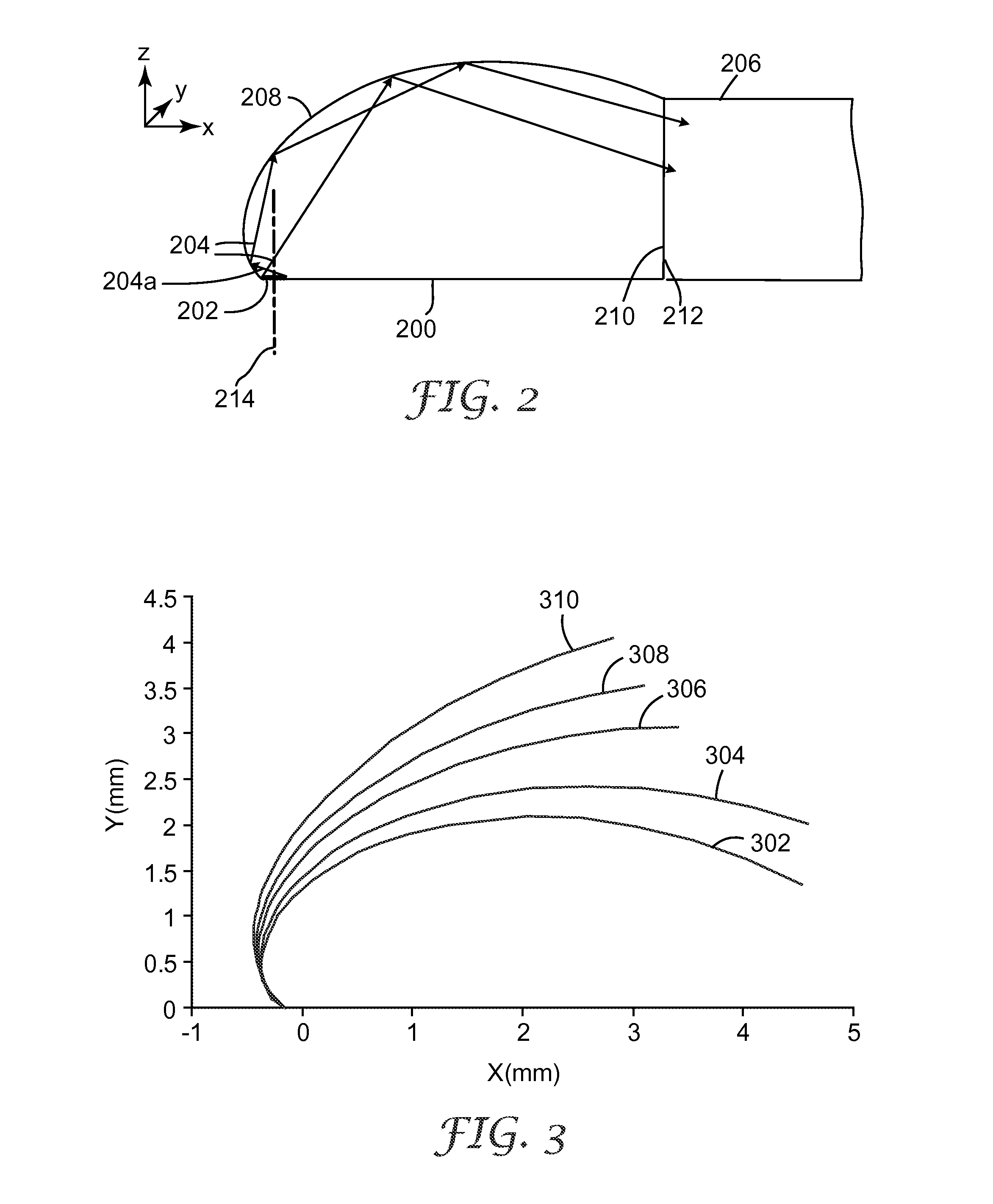LED light extraction bar and injection optic for thin lightguide
a technology of lightguide and injection optic, which is applied in the field of lightguides, can solve the problems of weak light spread, limited optical spread angle of propagation in the plane of lightguide, and poor uniformity
- Summary
- Abstract
- Description
- Claims
- Application Information
AI Technical Summary
Benefits of technology
Problems solved by technology
Method used
Image
Examples
Embodiment Construction
[0025]The present invention is applicable to optical systems and is more particularly applicable to optical display systems in which the display panel is illuminated from behind using a lightguide. In such displays, the light source or sources, is placed to the side of the display panel and the lightguide is used to transport the light from the light source(s) to positions behind the display panel. The invention relates to an approach for coupling light into the lightguide from a light source, such as a light emitting diode (LED).
[0026]A schematic exploded view of an exemplary embodiment of an edge-lit display device 100 is presented in FIG. 1. In this exemplary embodiment, the display device 100 uses a liquid crystal (LC) display panel 102, which typically comprises a layer of LC 104 disposed between panel plates 106. The plates 106 are often formed of glass, or another stiff material, and may include electrode structures and alignment layers on their inner surfaces for controlling...
PUM
 Login to View More
Login to View More Abstract
Description
Claims
Application Information
 Login to View More
Login to View More - R&D
- Intellectual Property
- Life Sciences
- Materials
- Tech Scout
- Unparalleled Data Quality
- Higher Quality Content
- 60% Fewer Hallucinations
Browse by: Latest US Patents, China's latest patents, Technical Efficacy Thesaurus, Application Domain, Technology Topic, Popular Technical Reports.
© 2025 PatSnap. All rights reserved.Legal|Privacy policy|Modern Slavery Act Transparency Statement|Sitemap|About US| Contact US: help@patsnap.com



